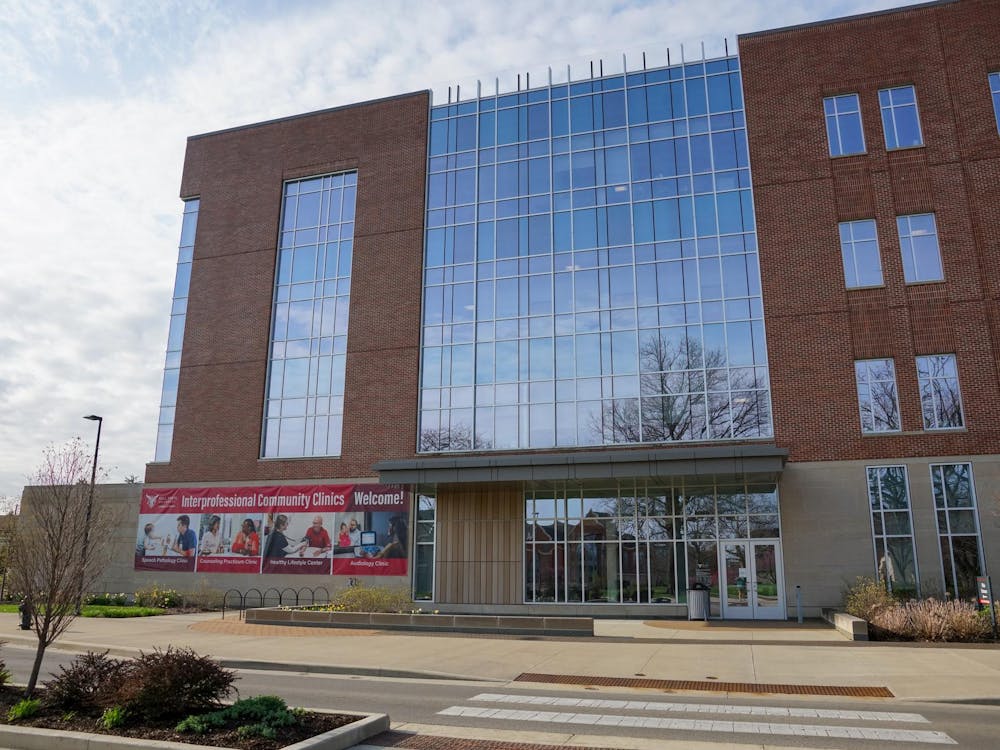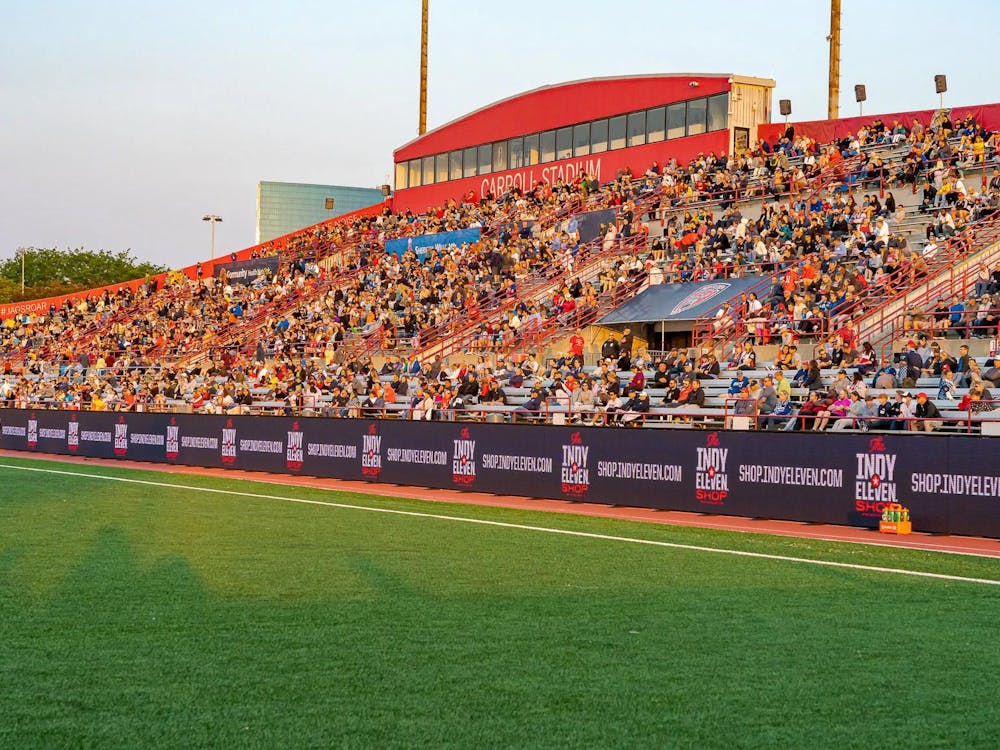Trigger warning: this story contains descriptions of sexual assault.
Allison Wright is a second-year psychology major and writes for the Daily News. Her views do not necessarily reflect those of the newspaper.
As I write this, I sit in the same dorm room, in the same bed as I did last year, where I stayed up all night, slept all day, had PTSD nightmares and panic attacks.
I anticipated writing this, knowing that going through the documents of my sexual assault case again would bring back triggers. I know how important it is, though, to make my story known, because it isn’t just my story.
I didn’t know what the Red Zone was when I moved into my dorm last year for my freshman year. I don’t know if it was mentioned during orientation, and I just blanked it out or if it wasn’t mentioned at all. The #MeToo Movement defines the Red Zone as “the time spanning the start of the fall semester through Thanksgiving break when more than 50 percent of all college sexual assaults are statistically found to occur.”
The first time I was sexually assaulted, I was 13 years old. My boyfriend at the time sexually assaulted, raped and mentally abused me for two years. When I was 15, an 18-year old preyed on my sympathy about mental health issues and manipulated me into having sex with him. Later on, someone I thought was my friend took advantage of me while I was incapacitated.
As someone who already dealt with anxiety and depression, these situations made me even more vulnerable. I adopted many unhealthy coping mechanisms that I’m still recovering from to this day.
Last year, I met the person who sexually assaulted me through a Ball State freshmen Instagram page. We messaged back and forth on Instagram casually for a couple of days before we agreed to meet up and hang out. One night, around midnight, I convinced myself to be spontaneous and hang out with him.
I was trying to convince myself that not every man I met was out to hurt me.
His dorm was decently far from mine, so he walked to meet me and then we walked back and talked at Frog Baby for a while before I agreed to go back to his dorm to charge my phone. We talked for a while longer, sitting on opposite beds, until I asked him to walk me back to my dorm. It was getting late and our dorm buildings were too far for me to walk alone.
Now, I feel like I should’ve taken my chances.
He refused to walk me back, and that’s when it started.
We all know the term “fight or flight,” but “fawn and freeze” are not as common. I, as well as many others, respond to fearful situations by freezing or fawning, which is characterized by reverting to people-pleasing behaviors in order to avoid further conflict, a coping mechanism I developed in my first abusive relationship. My brain turned to television static. I felt as though I was floating outside my body, watching myself. This feeling is called dissociation, a feeling which is common for sexual assault survivors who feel as though their bodies are not a safe place to be after they’ve been violated.
My state of dissociation got to a severe state months after the sexual assault took place. I reported the sexual assault to Ball State University, hoping the university’s system would bring more justice than state-level cases normally do.
I first was directed to the Office of Victim Services, which has recently been renamed to the Center for Survivor Support. The women who helped me were very empathetic, caring and supportive. They went with me to talk to the university police officer in charge of handling sexual assault cases.
I felt more comfortable with them by my side. They made me feel like they believed me.
Once I had to recount the story to Title IX, though, I only had my support person with me — my current boyfriend. I physically shook the entire time I told my story to someone whose job it was to be completely neutral, only focused on the facts. I felt as though I was a nuisance or that this person didn’t believe me.
I can’t be sure what they actually thought; it was just their job to record what I was saying and have me respond to some of what my assaulter had said. I was emailed a copy of both mine and my assaulter’s Title IX interviews. I put off reading them for several days, knowing that seeing my assaulter’s denials would send me into an even deeper mental spiral.
I stopped going to classes, stayed up at night and slept all day to the point where I barely saw the sun. After both of our interviews were completed, a hearing over Zoom was scheduled. It seemed to me like random faculty members were chosen to judge this case, like a jury system; one of them was a parking director.
These faculty members supposedly went through training for this situation, but I still felt insulted that there wasn’t a position exclusively for handling sexual violence cases. Both my assaulter and I were appointed an advisor who would ask the other questions during the hearing, and the panel would also be able to ask us questions while an additional person mediated and determined whether the questions were relevant.
My assaulter changed his story countless times, tripped over his own lies and tried to play the victim of a simple misunderstanding. I kept my story straight through my tears and extreme anxiety as the panelists asked me questions like if I was wearing a bra or if I kissed back. As if that would have made it okay for him to fondle me without my consent and physically put his hand over my mouth after being able to tell him I was uncomfortable.
After the hearing was over, we would wait for the decision of whether my assaulter would be claimed responsible for what he had done. After a list of acknowledgments and even my assaulter agreeing to almost everything that I’d said he’d done without any consent, the phone call I received came with the news that he was declared not responsible. I remembered when I read in my assaulter’s interview where he’d said that I was “asking for it,” the biggest red flag phrase he could say.
This case should have been so simple, or so I thought. I was so angry with myself because I had told myself that if anyone tried to touch me without my consent again, I would be able to escape the situation. I couldn’t do that, so at least I tried reporting it, so my assaulter couldn’t do it to anyone else. What I thought was a solution, ended up making everything worse.
My mental state continued to deteriorate; I was constantly dissociating, I had lost almost all of my friends because of my erratic behavior and drastic moods. I didn’t really care about anything. I felt as though the school I had loved and been involved with from a young age had given me a slap to the face when I trusted them to protect me.
My therapist at the time had me take the Minnesota Multiphasic Personality Inventory, a tool used to help diagnose mental disorders. When we went over the results, he told me I was at risk for developing paranoid schizophrenia and psychosis because of how deep my distrust had become. I remember thinking to myself how much I had looked forward to a fresh start in college, how excited I was and how angry and distraught I felt that my first year was yet another replay of abuse.
I ended up going home early that year because there was no hope for me academically. I started an Instagram page, MeTooBallState, for people to share their own stories of sexual assault on campus. I needed to turn my pain into a way to help others. For a few months, I anonymously collected testimonies of students’ experiences with sexual assault, reporting or feeling like they couldn’t report, and with permission, I posted them.
I attended protests at other Indiana colleges, such as Hanover, about the handling of student sexual assault. I even tried to organize a peaceful, supportive protest at Ball State with the help of some friends from another college’s organization battling sexual violence. However, there were too many obstacles that prevented the protest from happening.
Survivors need to feel safe and supported. We need to feel listened to. According to RAINN (Rape, Abuse & Incest National Network), 13 percent of all students experience rape or sexual assault; among undergraduates, 26.4 percent of females and 6.8 percent of males experience rape or sexual assault. 23.1 percent of transgender, genderqueer or nonconforming college students have been sexually assaulted.
Someone you know, probably more than just one person, has experienced sexual violence.
I stopped using the MeTooBallState Instagram page for my own mental health, but I am not done talking about this. I love my school too much to allow it to fail so many of its students like this. There is so much room for improvement in this system.
I thankfully recovered a lot over the summer. I’ve made a lot of friends, healed a lot and started a band called Mushroom Teeth. I still battle depression, anxiety and PTSD, but I’m doing much better than I was a few months ago.
Because of my academic performance last year, I lost my financial aid. Now, I have to work extremely hard to gain it back, but I’m up to the challenge.
I’ve since been able to use my experiences to be able to empathize with others and support them through their own healing journeys. If you are a survivor of sexual violence, you are not alone. You are loved and valued; please know the pain won’t last forever. You are so strong, and I’m proud of you for being here.
You’re going to be okay.
Contact Allison Wright with comments at anwright2@bsu.edu.
After a formal complaint is filed and parties are notified, the Title IX coordinator designates an investigator to collect evidence regarding the alleged misconduct.
Upon the investigation's conclusion, the university appoints a hearing panel that is in charge of determining responsibility for the alliegations made in the formal complaint.
Once the hearing panel has made a formal decision, the chairperson will produce and provide a written statement to the parties, and the process will conclude.
Source: T.J. Brecciaroli, associate vice president, dean of students and Title IX coordinator. He was unable to provide further comments due to deadline contraints.





